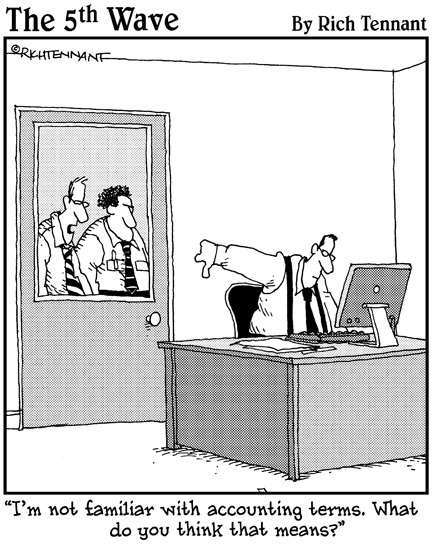Part IV
Analyzing Debt and Equity

In this part . . .
A company’s balance sheet contains various asset, liability, and equity accounts. Part III discusses assets. In this part, you get into the other two pieces of the balance sheet pie: liabilities and equity. For your reading pleasure, this part of the book further breaks liabilities into current and noncurrent, giving each its own chapter.
Chapter 14 is all about the short-term claims payable by the company, or debts; in accountant-speak, they’re liabilities. Current liabilities are one the company reckons it will pay within 12 months and help a business manage its day-to day operations.
Businesses use long-term debt obligations, such as mortgages and bonds, to acquire assets. Chapter 15 discusses accounting for long-term obligations under various debt scenarios. This chapter also gives you the lowdown on bonds payable, including ones a company issues at face, discount, and premium.
Finally, Chapter 16 discusses the equity section of the balance sheet, which shows the combined total of each owner’s investment in the business. You read about corporate equity, represented by stock and additional paid-in capital. I also explain the difference in common, preferred, and treasury stock. You also find out about dividends and how to figure earnings per share, both simple and complex.
Get Intermediate Accounting For Dummies now with the O’Reilly learning platform.
O’Reilly members experience books, live events, courses curated by job role, and more from O’Reilly and nearly 200 top publishers.

